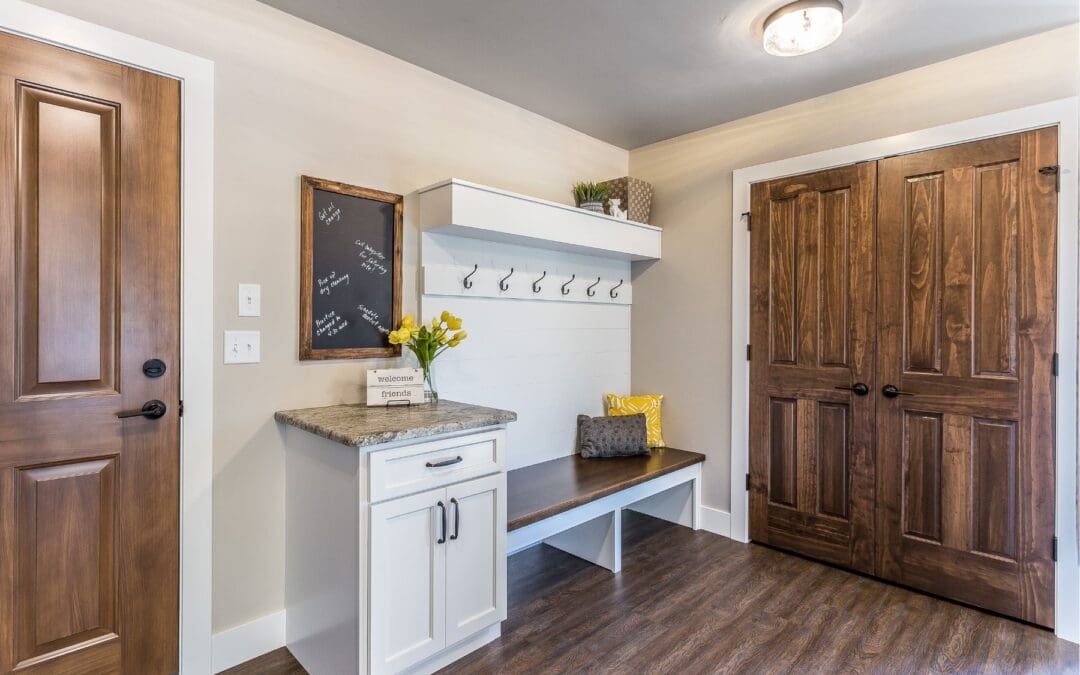The mudroom, often overlooked in home organization, serves as an essential buffer zone that protects the rest of your home from outdoor chaos. It handles everything from muddy boots and wet coats to sports equipment and the daily onslaught of backpacks and mail. Investing time and effort into creating a mudroom is a practical decision that enhances your home’s functionality.
Creating a Mudroom: Assessing Your Space and Needs
Before you start sketching out designs, you need a clear understanding of your available space and, more importantly, what you need the mudroom to do.
First, identify the location. Is it a dedicated room, a corner of the garage, a reworked laundry room, or perhaps a long, narrow hallway near a secondary entrance? The size and shape of this area will dictate the layout. A small, narrow space requires vertical storage solutions, while a larger area might accommodate a bench and closed cabinetry.
Next, conduct a “needs assessment.” Who uses this entrance, and what do they bring in? A family with young children needs low-hanging hooks and easy-to-reach cubbies. Pet owners require a designated spot for leashes, towels, and perhaps even a utility sink for quick washes. Sports enthusiasts will need specialized storage for bulky gear like hockey sticks or golf bags. Make a list of everything that typically clutters the entry point and estimate the amount of storage each category requires. This initial analysis is the backbone of your design.
Defining Your Storage Strategy
Effective mudroom design hinges entirely on smart storage. The goal is to provide a place for everything, keeping daily essentials easily accessible and seasonal items tucked away.
Lockers and Cubbies: The cornerstone of mudroom organization. Assigning a dedicated locker or cubby to each family member ensures personal accountability for their items. These should be customized to the user; tall, deep cubbies for adults’ briefcases and coats, and smaller, lower ones for children’s shoes and backpacks. Consider adding electrical outlets inside some cubbies when creating a mudroom for charging phones or portable devices out of sight.
Bench Seating: A bench is a non-negotiable feature for functionality. It provides a comfortable place to sit while putting on or removing shoes, and it often doubles as hidden storage. A bench with a lift-up lid or built-in drawers underneath maximizes every inch of space.
Hooks and Hanging Space: Always prioritize sturdy hooks over flimsy coat racks. Hooks are faster and easier for daily use, especially for children. Include different types: strong, deep hooks for heavy winter coats and backpacks, and smaller hooks for keys, dog leashes, or reusable shopping bags. Don’t forget open shelving above the lockers for decorative storage, like baskets for gloves and hats, or for displaying meaningful items.
Flooring and Durability: The floor of a mudroom takes the greatest abuse. Selecting a durable, water-resistant, and easy-to-clean material is crucial. Popular choices include ceramic or porcelain tile, which can handle moisture and grime and can be installed with a slight slope toward a drain if you are planning a utility sink area. Large-format tiles can make cleanup easier by reducing the number of grout lines. For a warmer look, consider durable, waterproof vinyl plank flooring.
Integrating the Details: Function and Aesthetics
While utility is primary, the mudroom is still part of your home and should feel cohesive with the rest of your design. A splash of color on the cabinetry, unique hardware, or a patterned tile can elevate the space from purely functional to truly inviting.
Lighting: Good lighting is essential, both for safety and for making the space feel less like a dark, utilitarian closet. Layer your lighting with overhead ambient light, such as a flush-mount fixture, and task lighting, such as under-shelf lighting in the cubbies. Natural light is always a bonus, so avoid blocking any existing windows.
The Drop Zone: Dedicate a small surface for items that need to be dealt with immediately, like keys, mail, or lunch notes. This can be a narrow console table or a small section of a built-in counter. Integrating a corkboard or whiteboard for important reminders prevents notes from being scattered around the house.
By approaching your mudroom project with a strategic mindset—focusing on personal needs, durable materials, and tailored storage—you will create a highly efficient and well-loved addition to your home. It’s a space designed to absorb the mess, allowing the rest of your home to remain the clean, calm retreat you deserve.
Frequently Asked Questions About Creating a Mudroom
What is the minimum recommended size for a functional mudroom?
There is no strict minimum, but to accommodate bench seating and standard 18-inch-deep lockers, a space that is at least 5 feet wide (to allow for walk-through space) and 5 to 6 feet long provides enough area for a small, functional setup. A larger space is always preferred, but even a dedicated 3-foot-wide hallway can be converted into an efficient mudroom with shallow cabinetry and hooks.
Should I include a door between the mudroom and the rest of the house?
Yes, installing a door is highly recommended. It serves a practical purpose by containing the mess, noise, and temperature fluctuations from the exterior, especially when the mudroom leads to the garage. A solid core door can also help soundproof the rest of the living area from the activity in the entry zone.
Are open cubbies better than closed lockers?
This depends on your tolerance for visual clutter. Open cubbies are more accessible and easier for daily use, which is ideal for children. However, they showcase all the contents, which can look messy. Closed lockers with doors hide clutter effectively but require more effort to open and close. A popular compromise is to use a combination: open cubbies below the bench for shoes and closed upper cabinets for out-of-season items.
Best Choice Inspections offers home inspections in Knoxville, TN, and the surrounding area. Contact us to schedule an appointment.

